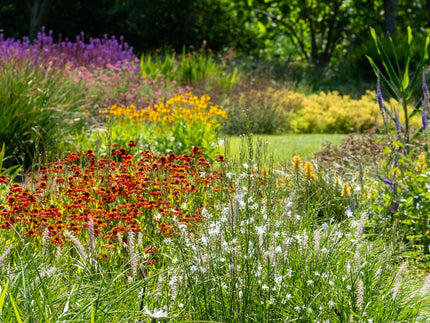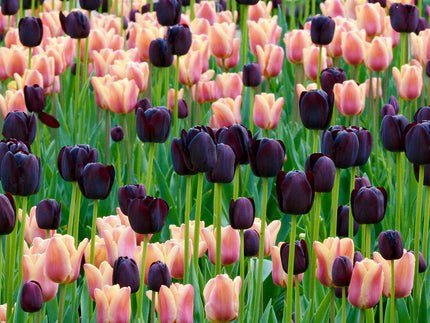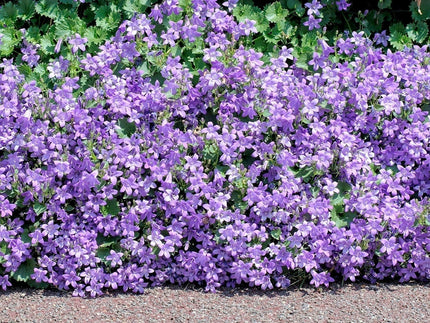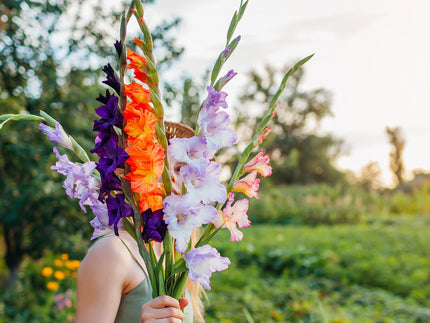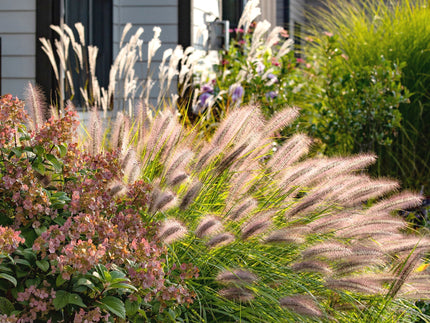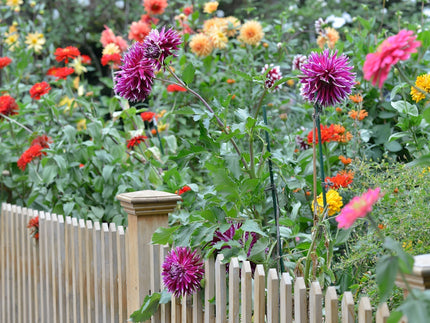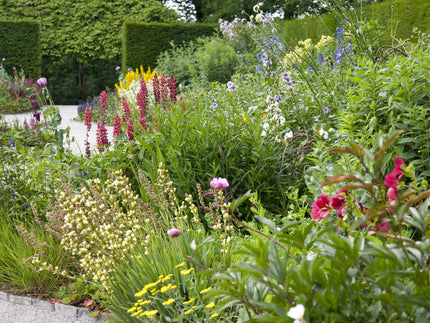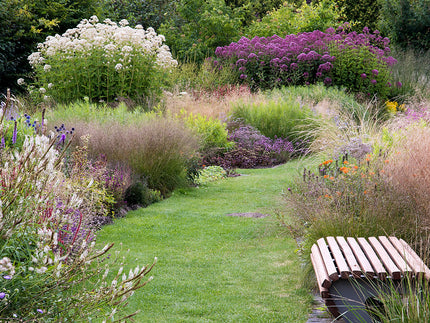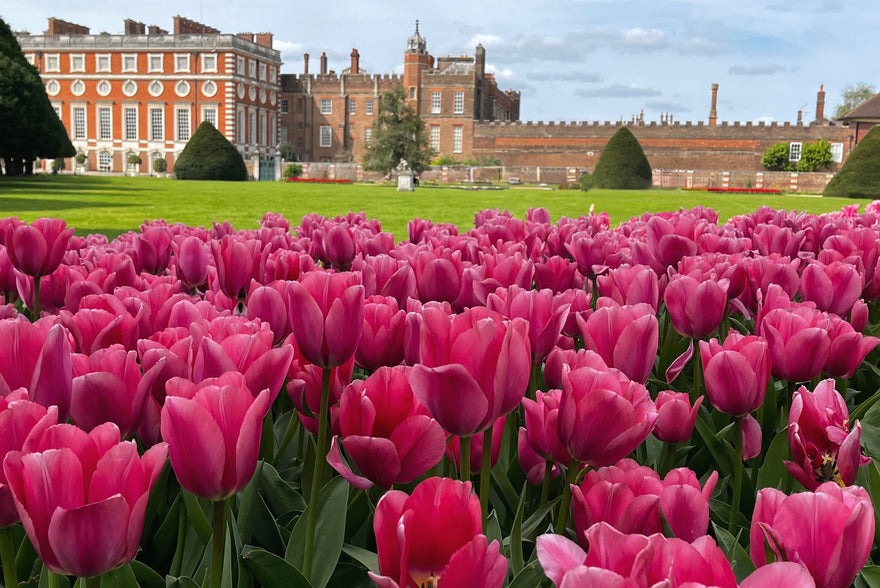
The blooming history of Dutch flower bulbs in the UK
The history of Dutch flower bulbs in the UK is a fascinating tale of horticultural prowess, economic trade, and cultural exchange spanning several centuries. This enduring relationship between Dutch bulb growers and British gardeners has contributed to the UK’s reputation as a nation of flower enthusiasts, with tulips, daffodils, and hyacinths brightening gardens across the country.
The introduction of flower bulbs to the UK
The importation of flower bulbs from the Netherlands to the UK dates back as far as the 16th century. During this period, trade and exploration were burgeoning industries, paving the way for the movement of plants and horticultural knowledge across Europe. The Dutch were particularly adept at cultivation and trading, already recognised for their advancements in agriculture and horticulture.

The first notable influx of Dutch bulbs into the UK occurred during the Tudor era. Queen Elizabeth I was known for her love of gardens and flowers, fostering a keen interest that permeated through the nobility and eventually the wider populace. It wasn’t long before tulips, which arrived in the Netherlands via Ottoman traders, made their way to British shores, charming the British aristocracy with their vibrant colours and unique shapes.
Tulip Mania: A Dutch phenomenon reaches the UK
The early 17th century witnessed the phenomenon known as Tulip Mania in the Netherlands, a period where tulip bulbs became a form of speculative investment, sometimes reaching exorbitant prices. While Tulip Mania was primarily a Dutch event, it did have palpable effects on British horticulture and bulb importation.

During this time, the fascination with tulips escalated in the UK as well. British gardeners and collectors began importing rare and exotic varieties, and tulips quickly became a symbol of status and wealth in British society. Despite the market's crash in 1637, the demand for tulips and other Dutch flower bulbs in the UK remained robust, establishing a lasting horticultural bond between the two countries.
17th and 18th centuries: Solidifying the trade routes
By the latter half of the 17th century and into the 18th century, the trade of Dutch flower bulbs to the UK had become well-established and systematic. This period saw an increased demand for a variety of bulbs including hyacinths, narcissus (daffodils), and crocuses, in addition to tulips. Dutch horticulturalists were pioneers in refining cultivation techniques, creating new and hardy varieties that could thrive in different climates, including the often temperate but unpredictable British weather.

One of the key figures during this period was Carolus Clusius, a Flemish botanist whose work with tulips, in particular, laid much of the groundwork for modern horticulture. His influence extended into the UK, promoting the cultivation and appreciation of Dutch bulbs among British botanists and garden designers. The renowned Chelsea Physic Garden, founded in 1673, became an important centre for botany and played a significant role in the acclimatisation and study of foreign plants, including Dutch bulbs.
Victorian era: A blossoming of botanical interests
The 19th century, specifically the Victorian era, marked a golden age for gardening in the UK. The Victorians had an insatiable appetite for gardening, and flowers played a central role in garden designs. The expansion of the British Empire also facilitated the exchange of plant species worldwide, enhancing the diversity and richness of British horticulture.
Dutch flower bulbs were an integral part of this horticultural renaissance. As public parks and gardens flourished, so did the presence of Dutch bulbs. The rise of middle-class wealth allowed more people to indulge in gardening as a hobby.

This surge in gardening enthusiasm was accompanied by improved transportation networks, such as the expansion of the railway system, which made the importation and distribution of Dutch bulbs more efficient than ever before.
Large-scale flower shows and exhibitions became popular, with events like the Chelsea Flower Show, established in 1862, showcasing exotic blooms from around the world, including Dutch bulbs. Nurseries across Britain began to stock vast quantities of Tulip bulbs, Narcissus bulbs, and Hyacinth bulbs, cementing these flowers' place in the British horticultural landscape.
20th century: Innovations and mass gardening
The 20th century brought about significant advancements in horticulture and gardening, many of which had a profound impact on the use of Dutch flower bulbs in the UK. The introduction of hybridisation techniques led to the creation of new, resilient, and more colourful varieties, ensuring year-round interest and beauty in gardens.

Post World War II, there was a particularly notable spike in the popularity of gardening. The UK's Dig for Victory campaign had turned much of the population into amateur gardeners, and post-war, there was a natural transition from food cultivation to ornamental gardening. Dutch bulbs played a significant role in this movement, providing an affordable and easy way to brighten up war-torn Britain and restore a sense of normalcy and beauty to everyday life. The concept of mass gardening was born, with bulbs being sold in greater quantities and more homes boasting vibrant spring displays.
Furthermore, as gardening television programmes, books, and magazines became more widespread, knowledge about Dutch bulbs reached an even broader audience. Notable gardeners and TV personalities extolled the virtues of these hardy, colourful flowers, making them staples in public and private gardens alike.
Dutch flower bulbs as a staple of British gardens
Today, the legacy of Dutch flower bulbs in the UK continues to thrive. Thanks to centuries of cultivation and trade, the UK is home to some of the most magnificent spring bulb displays in the world. Iconic locations, such as Kew Gardens, the Royal Botanic Gardens in Edinburgh, and Wisley Gardens, regularly feature stunning displays of tulips, daffodils, and hyacinths.

The accessibility of Dutch bulbs has also improved, with many local garden centres and online retailers providing a vast array of varieties to suit any gardening need or aesthetic preference. From classic species like the elegant white Tulip 'White Emperor' to striking modern hybrids like the pink-edged Tulip 'Angelique', Dutch bulbs offer something for every gardener, whether novice or expert Moreover, the sustainability movement has also influenced the trade and cultivation of Dutch bulbs.
Suppliers like Farmer Gracy now focus on organic and eco-friendly growing practices, ensuring that the beauty of our gardens does not come at the cost of environmental degradation. This shift towards sustainability has been embraced by British gardeners who increasingly value ethical and environmentally responsible gardening practices.
Cultural and social impact
Beyond their visual appeal, Dutch flower bulbs have also had a significant cultural impact in the UK. The spring bulb displays in public parks and gardens have become a cherished tradition, drawing locals and tourists alike to witness the vibrant seas of colour that herald the end of winter. These displays have inspired countless artists, writers, and photographers, embedding Dutch bulbs deeply into the cultural fabric of the UK.

Educational institutions continue to highlight the significance of these bulbs through botanical studies and horticultural courses. Garden shows, such as the renowned Chelsea Flower Show, celebrate the artistry of flower bulb cultivation, with Dutch growers often participating and showcasing their latest innovations.
A flourishing future
The history of Dutch flower bulbs in the UK is a testament to centuries of horticultural collaboration and mutual appreciation. From their introduction in the 16th century to their prominence in modern-day gardens, Dutch bulbs have undeniably enriched British horticulture, providing bursts of colour, intricate designs, and robust varieties that delight gardeners and nature enthusiasts across the nation.
As we look to the future, it is clear that Dutch flower bulbs will continue to play a vital role in UK gardens. Their enduring popularity, coupled with advancements in sustainability and cultivation techniques, ensures that they will remain a cornerstone of British horticulture. Whether in a sprawling estate, a public park, or a suburban garden, the legacy of Dutch flower bulbs will continue to bloom beautifully, enriching lives and landscapes for generations to come.
With their rich history and ongoing innovation, Dutch flower bulbs are more than just plants; they are a symbol of the enduring connection between the UK and the Netherlands, a relationship rooted in a shared love for the natural world and its endless possibilities for beauty and growth.




























































































































































































































